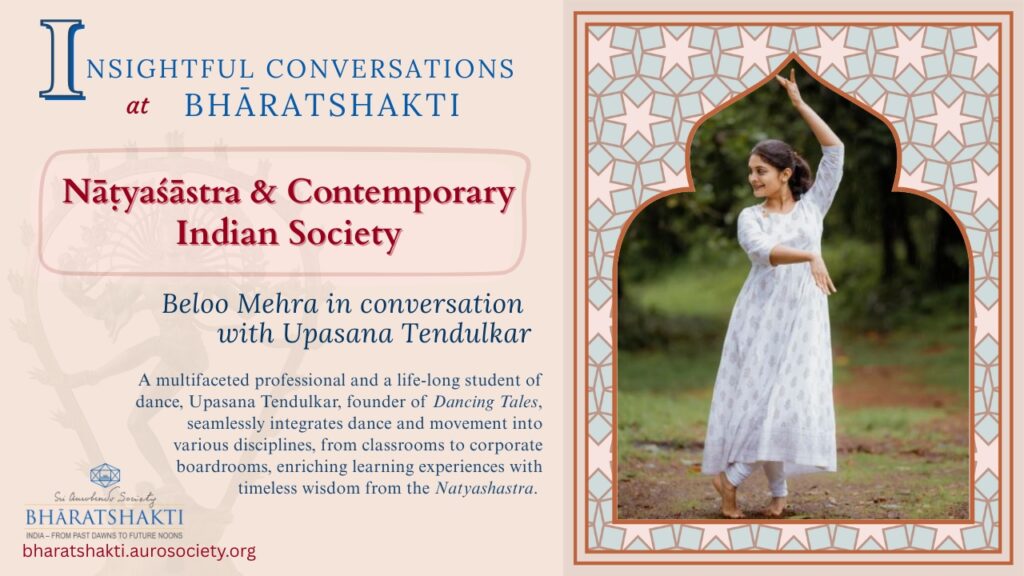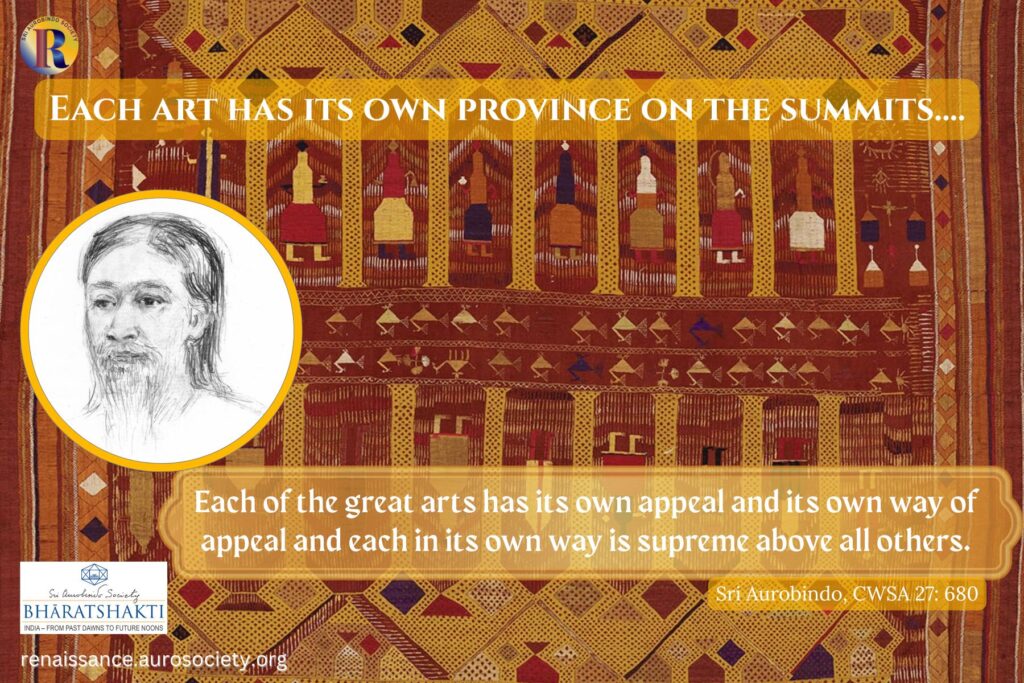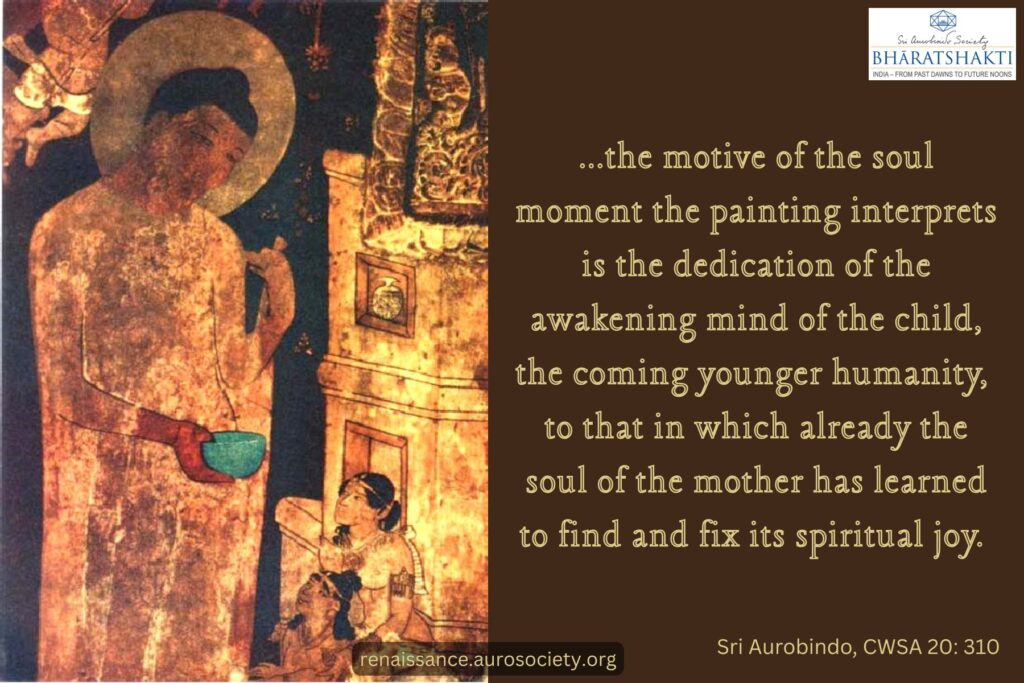Volume V, Issue 11-12
Author: A.B. Purani
CONTINUED FROM PART I
Editor’s Note: In this part, the author focuses on the future art of humanity. He also summarises the many planes of consciousness to which an artist can ascend through yoga.

PART II
Examples from Present Times
Some may think that this method of an inner concentration or identification with the subject may be suitable to ancient India. But it can have no utility for the modern man. This is far from actual experience. The example of George Russel, alias AE, the Irish poet, shows that not only in modern times but even outside India, this subjective method of creating forms is practicable. His book “Candle of vision” bears witness to his experience of it.
The case of Raihana Taiyabji, whose book The Heart of a Gopi is an illustration of such receptivity of forms from the inner worlds, proves that it is capable of being useful today.
The most striking example, however, so far as the field of painting is concerned, is that of the great Bengali artist, Abanindranath Tagore. In his autobiography, A. Tagore has described how he used to see a flood of forms, all colourful, around him when he was trying to paint the “Krishna-Charit” series. It seemed as if the brush was slower than the flow of forms that was trying to rush down on the canvas. The difficulty was not how to create forms but how to canalise the flow of inspiration into controlled expression.
The other experience came to him after the death of his mother.
When his mother died A. Tagore felt deeply sore because he had not drawn his mother’s portrait. He sat quietly and tried to recall in memory his mother’s form. All unexpectedly it appeared before his inner vision. He was excited and became nervous and tried to draw the portrait in a hurry. Suddenly the vision disappeared. Then being advised by his elder brother, he remained calm when the vision appeared to him a second time. This time he was able to draw the whole portrait faithfully and satisfactorily.
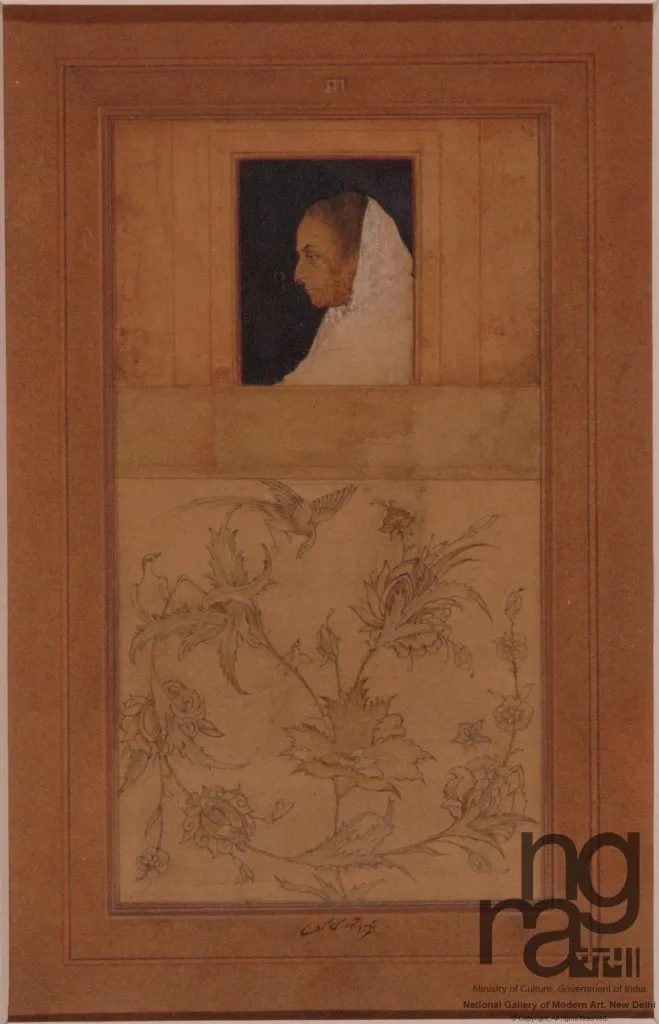
Not a Return to the Past
But while these examples—Indian and European, are given it is not suggested that there should be in the world of art a return to the past whether of Europe or of India. This is not desirable, neither is it possible. In the words of A. Tagore, “such an effort would be a forced marriage—Raksasa Vivaha—between the present and the past… As a carriage cannot move backwards so cannot life”. (Bageshwari Lectures).
But India should certainly try to contribute something from her deepest soul, something based on her culture,—something that once gave to the world Ajanta and Ellora—to modern art, as to other fields of human endeavour. In short, India, open to the world’s progressive currents, must create as her deepest soul dictates, not as some outer domination dictates or determines.
As the spiritual vitality of India becomes strong her creative power in art will also develop. When I say “Strong vitality” and “India’s advance” I mean by the phrases India’s spiritual strength, the development of her soul, her true consciousness apart from national egoism and desire-soul.
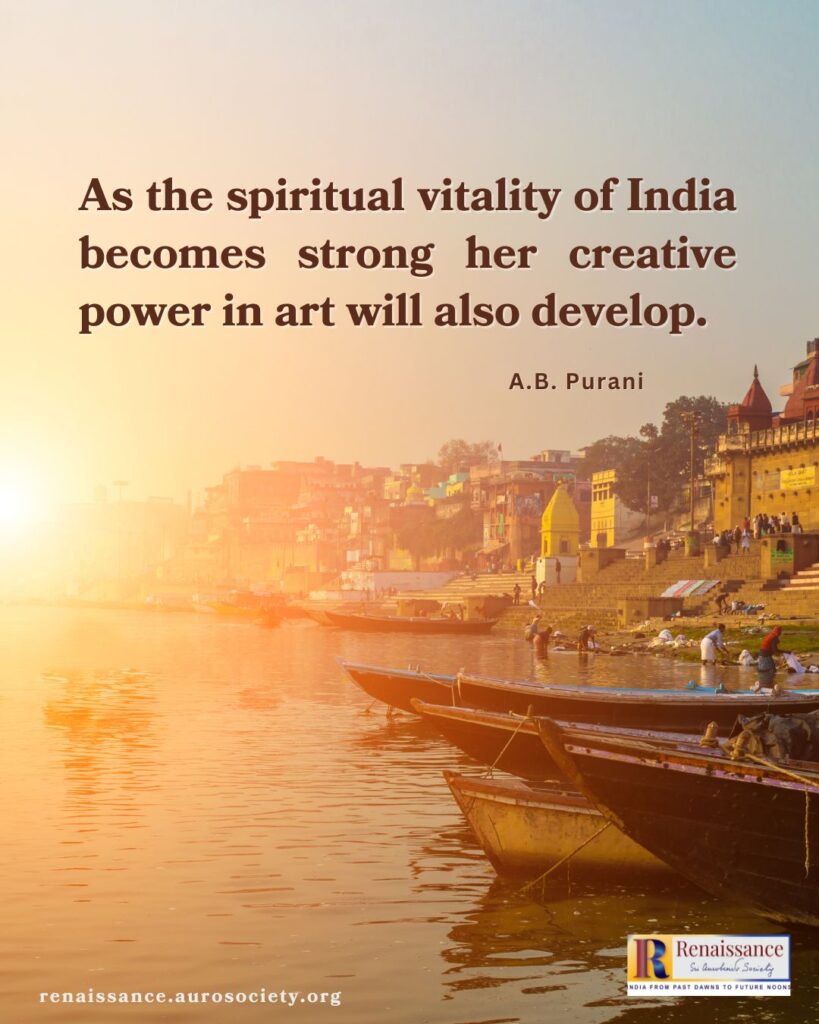
Future Art of Humanity
The differences that divided the East and the West have not remained constant. Political and economic considerations and also the swift and easy transport are bringing men nearer and nearer. This process is bound to increase with time. More than any other, in the field of art men will begin to feel the need of unity and progress.
Future art will move more and more towards the art of humanity. But it will not be the type of modern European art though it seems to dominate almost all countries at present. The ideals, theories and methods which govern it will pass and will have to give place to more balanced elements.
The art of the future will utilise to the full the great contribution to technical advance made by the modernist period. The art of humanity—a common cultural achievement of man’s soul seeking for beauty, desiring to create forms—will not mean the disappearance or suppression of all characteristics of racial or cultural art-elements. On the contrary the characteristics of each art will contribute its share to the common, universal art.
But before that consummation comes, each regional or cultural art will have to try to assimilate the elements of other developed arts. The art of Japan, China, India, France and other countries will each contribute to the making of the art of humanity. This will not come about by an artificial process of addition but by an organic growth, by assimilation.
Art of humanity will really appear when mankind has learnt to feel the whole humanity as one, i. e. when man outgrows his national egoism, and begins to think and feel in terms of humanity.

Art of Subjective Self-expression
The main characteristic of that future art will be that of the modernist art in its beginning. It will be an art of subjective self-expression in which the higher ranges and deeper truths of man’s consciousness will find rhythmical expression. It will bring into art-forms authentic subjective experience of levels of being beyond mind. And even when it deals with life and Nature and the material world, it will bring into play an intuitive or an inspired vision, the sight which will transform them into a world of beauty.
It may be asked why modernist art, which already stresses subjective expression, is not regarded as great or successful. The answer is that the nature of the trend is in the right direction. Europe is trying hard to get away from its extroverted surface consciousness to something behind, something deeper. It has not yet found the true inner source of creation.
True and False Subjectivism
There is possible… a true and a false subjectivism. There is ‘ego’ and true individually in man: one is false the other is true—though both may be said to be subjective. It is the false, or rather ignorant subjectivity that finds expression in most of the modern art creations. It expresses the subconscient, the lower-vital region of impulses, the chaotic inner planes of consciousness. And it is incapable of meeting our highest aesthetic need.
Two elements of the highest importance which modernist art has given to all future art are: freedom to create in the light of the artist’s soul, and a certain directness in the method of self-expression.
In one of his replies to a friend Picasso says: “not what the painter does but what he is, is important”. It has long been recognised that the true creator is the soul or more correctly, the inner being, of the artist, even though outer objects, environment, life-experience may act as stimulating influences to set his creative inner being into movement.
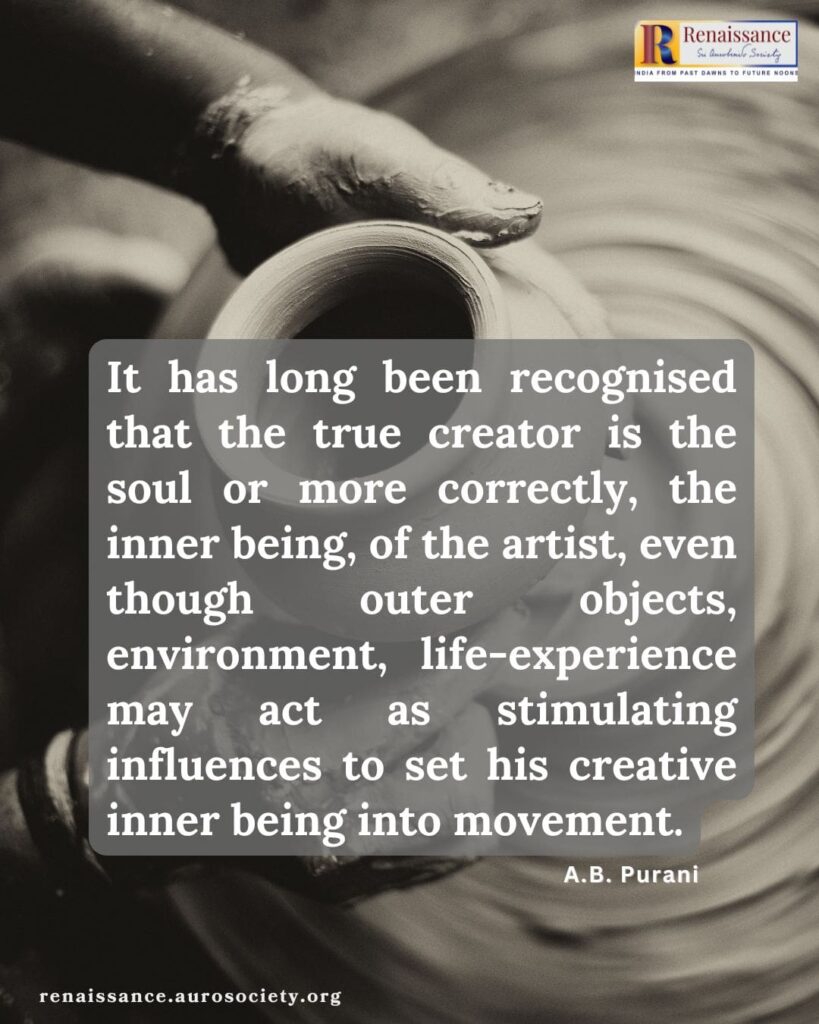
Many Levels of Being
But this inner being of man is surrounded by instruments of Nature which are very complex. It has many levels of being. In fact, it is this complexity of man’s inner being that renders the task of the artist very difficult. Very often he mistakes his vital being that is interested in life and movement, his desire soul, for his true being. It is even true that this Vital being in man, his being of life-force, can and often does create great art.
In all true artistic creation this vital element is needed to give life to it. It draws its material not merely from the great ocean of life around but with the help of imagination it can create powerful, new forms which have a great appeal for life. There is a plane of higher vital being, a higher vital world, —far above the plane of ordinary life of every day where forms of great power and beauty exist. An artist can either rise to this plane occasionally and draw inspiration for his work from there. He can straightway bring down forms— either literary or plastic—into his art-creation or may modify them in transit through his consciousness.
But that is not the highest plane available to the artist. He can rise to the intellectual plane and feel, perceive or see forms on that plane and can establish contact with them and bring them down in his creation.
An artist can, if he acquires the practice, even contact his true soul, his true being, his inmost self, and see forms on that plane. He can bring them down into his art-creation.
Levels Above the Mental Plane
Above the mental level there are ranges of consciousness attainable by man.[1] The greatest artists are those who, either consciously or unconsciously, succeed in contacting these higher levels of consciousness and bring down forms from the world of supreme harmony.
Behind all the outer aspect of turmoil and strife of life there is a harmony trying to express itself. This harmony is not merely a harmony on the life-plane, though life is its most important field for expression. This harmony is spiritual; some glimpse of it the poet had when he spoke of “the music of the ‘spheres’.”
It belongs to a supreme spiritual plane, but its aim is to manifest itself here on our life-plane. Art is one medium through which it can express itself here in terms of material media. An artist can contact— in fact, the greatest artists have always contacted,—this plane of harmony and brought down forms from there in his art either direct or with some modification while they pass through his consciousness.
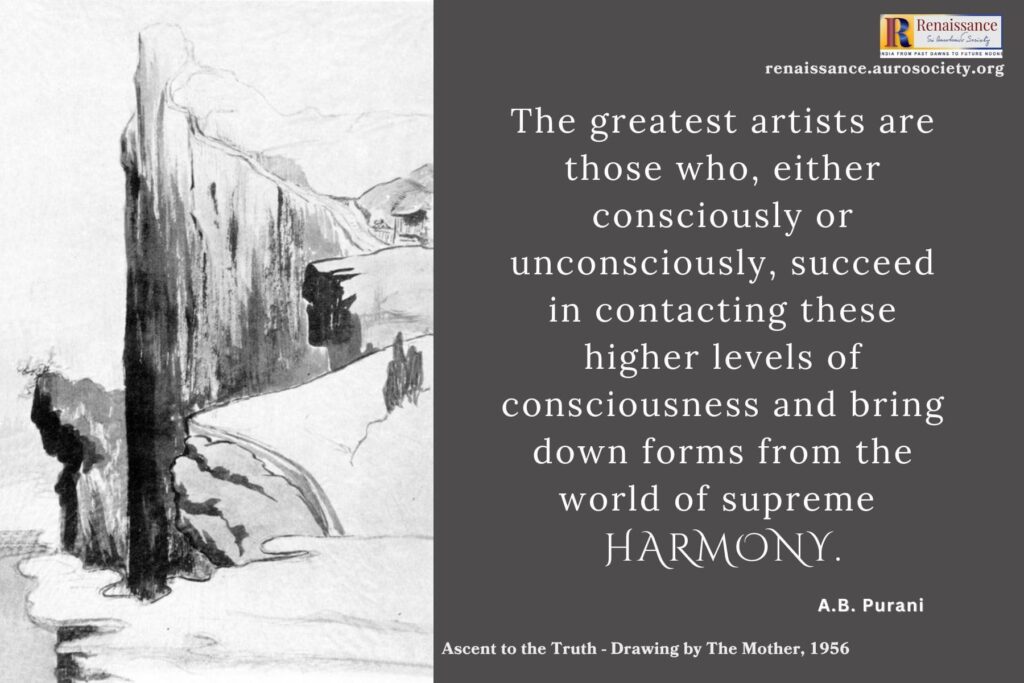
READ:
Art, Spiritual Progress, and the World of Creation
It is necessary that the modern artist should realise at least the great complexity and multi-dimensionality of man’s consciousness so as to save himself from obscurity and errors due to his want to clarity about the inner structure of man. Modern psychological theories can also give him a glimpse of this complexity, but these theories—like the psycho-analysis of Freud—give a very one-sided view of the inner being of man.
In the present state of art there is no reason for disappointment because the trend towards subjective expression is in the right direction. In future we might even look beyond the mere human self of man, for, there is within man the possibility of outgrowing his mere humanity. He can widen out and ascend to a universal consciousness. In his inmost being “ man is more than man ”.
The artist discovering his own true self would derive inspiration to create from there.[2] Even if he could not rise permanently to his true self an occasional ascent or exaltation would enable him to create from there. This was what the Greeks meant by ‘Enthusiasmos’.
The Highest Creator
If the artist could rise from his mental consciousness to intuition, inspiration and beyond to the universal plane and still beyond to the plane of Truth-harmony he could then give us an art that would be an embodiment of the higher movement of his consciousness while at the same time it would satisfy man’s aesthetic sensibility. He could then bring down forms which might rightly be called “divine”.
It is then that the artist acquires the right of the highest creator. In order to be able to do this great work he must ascend, however temporarily, to the heights or fathom the depths of consciousness and bring down here forms which not only are new but divine. Then shall we see with our mortal eyes forms that belong to a divine world.
Notes
- ‘‘It has always been the function of art to stretch the mind some distance beyond the limits of the understanding. That “distance beyond’’ may be spiritual or transcendental or perhaps, merely fantastical; somewhere it will overlap the limits of the rational. What is wholly rational cannot satisfy the aesthetic sensibility”. —Herbert Read
- “To live in the subliminal world, to dwell there and to forget the conscious world. …It seems the reality or sufficiency of normal perception; the vision of the eye is arbitrary and limited, it is directed outward. Inward is another and a more marvellous world. It must be explored.” —Herbert Read, Meaning of Art
CONCLUDED
READ PART I
~ Design: Beloo Mehra

